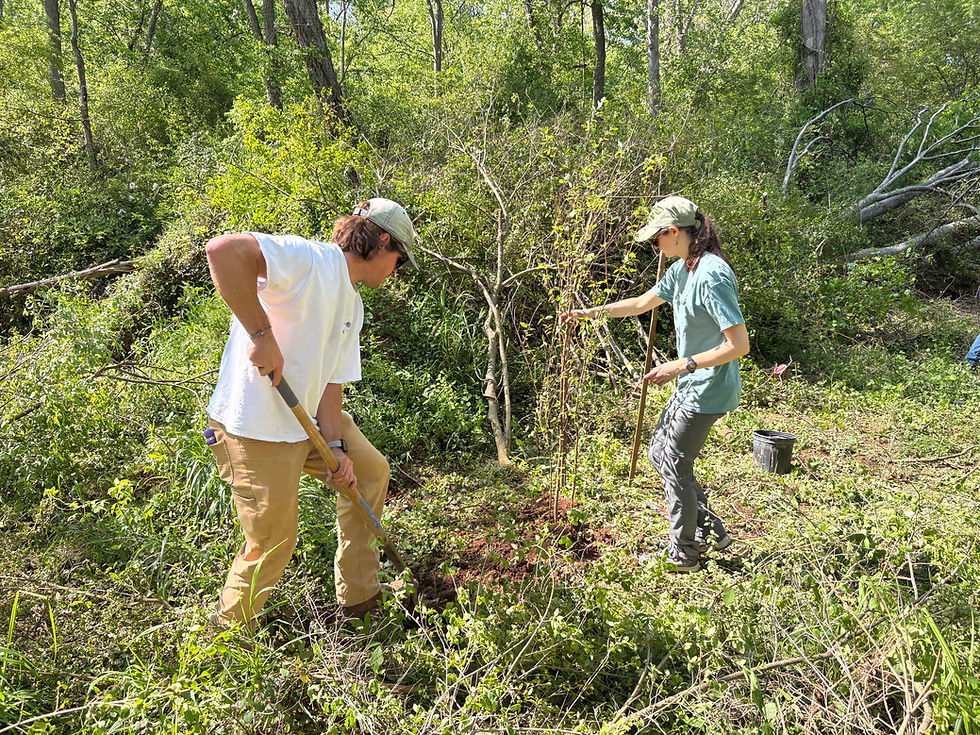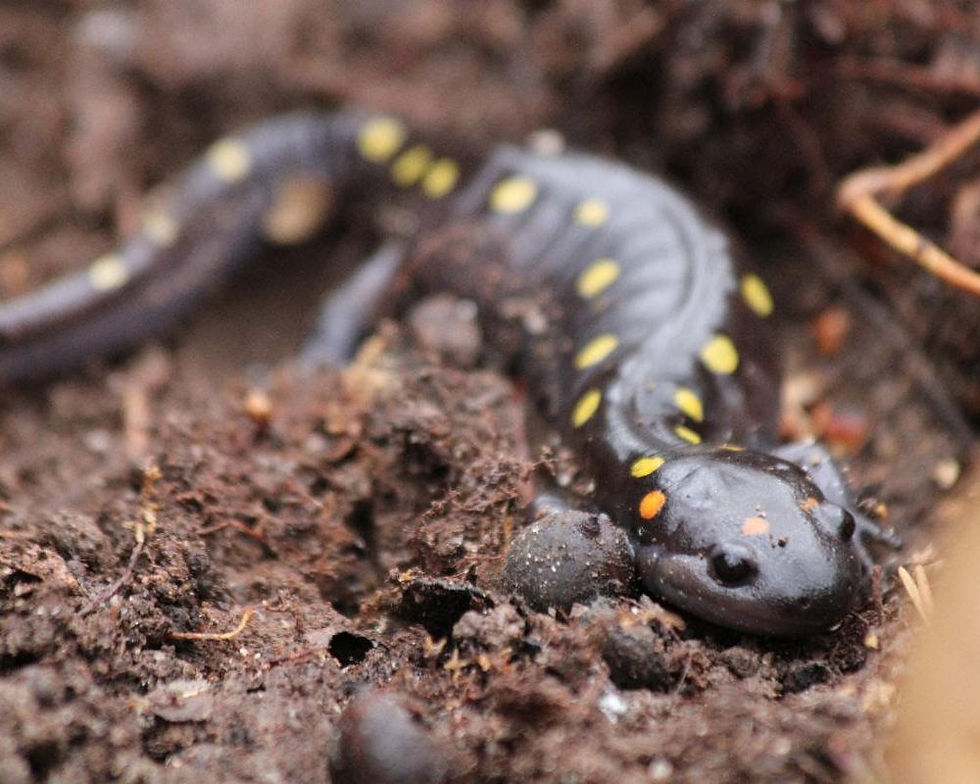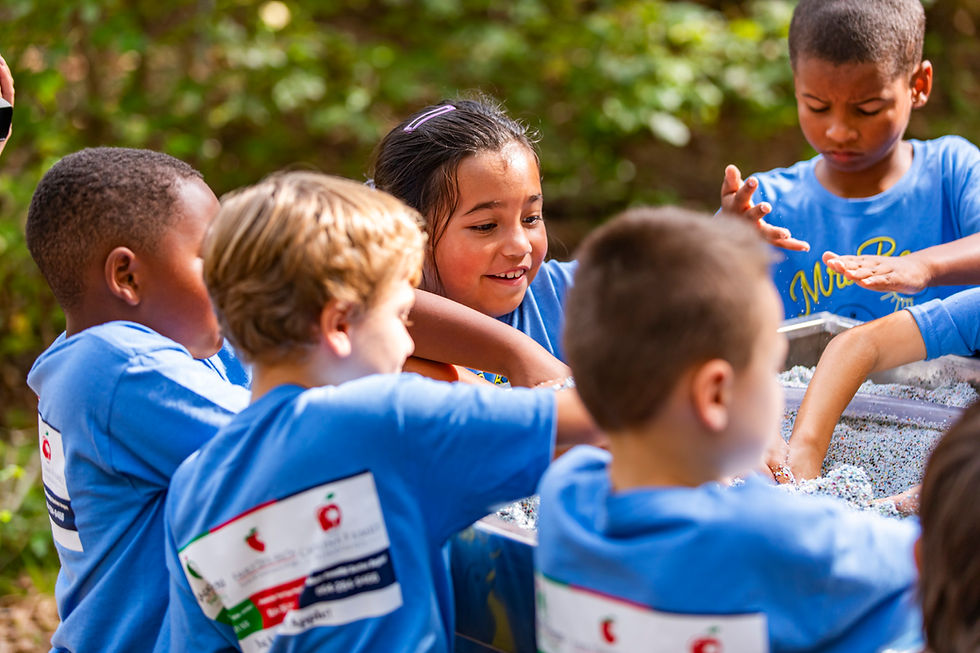Plantings and Pests: An update on our ash tree management plan
- Ben Stansell
- Aug 7, 2025
- 3 min read
Over the last several months, our staff has worked with multiple volunteer groups to restore approximately two acres of ash-dominated bottomland forest in our Preserve.
As you may have heard, our ash trees are being wiped out by the invasive Emerald Ash Borer. This is creating large, sunny gaps in the bottomland forest canopy that allow invasive plants to flourish, outcompeting our more beneficial native species.
More than 150 volunteers, including school groups, local companies, Scouts of America, and our Preserve’s habitat stewards, contributed over 200 hours of service to these restoration efforts. These dedicated volunteers helped us clear invasive plants such as privet and autumn olive in the understory and replant 175 native trees and shrubs, including swamp white oak, sweetbay magnolia, black gum, silky dogwood, and arrowwood viburnum, among others.

Not simply sticking the plants in the ground, these volunteers carefully corrected potential root issues before installing trees and shrubs. They then protected the planted trees with welded wire fencing to prevent beaver and deer damage during establishment. Although it’s harder to see now that we’re in the thick of the growing season, you can spot newly-planted trees along the boardwalk on our Purple Route.
In the fall, we’ll continue our bottomland restoration work with the goal of replenishing another few acres on our Brushy Creek tract, near where our trail system now connects to ReWa's Clean Water Connector loop and the Swamp Rabbit Trail.
Funding for this ongoing project was generously provided by Athletic Brewing Company’s Two for the Trails Program and the Greenville Zoo. Without these funds, we would not be able to do this critical work!
What’s that old saying? The enemy of my enemy is my friend. Sign us up.
The Preserve has a new resident wasp. Well, actually about 1,100 of them.
Oobius Agrili is a parasitic non-stinging (yes, I said non-stinging) wasp native to North Asia. A solitary egg parasitoid, Oobius searches through the bark of ash trees for Emerald Ash Borer eggs and injects its own eggs inside them. Those Oobius eggs then hatch, grow, and ultimately kill its host.
Oobius Agrili is a form of biological control – a method of managing unwanted pests (in this case, Emerald Ash Borer) by deploying a pest’s natural enemy. Biological controls offer a targeted, self-sustaining solution to pest management that doesn't require insecticides. A lack of a natural predator like Oobius Agrili is part of the reason why EAB has killed millions and millions of ash trees throughout the country.
USDA-APHIS is administering and overseeing the Oobius Agrili release program. The Preserve was a natural choice due to its high-density of ash trees infected with EAB. Before agreeing to host the Oobius program, the Preserve spoke with local forest entomology experts to weigh its risks and rewards.
In the first two years of the program, USDA officers will install oobinators – upside down pill bottles containing Oobius Agrili larvae – on a number of ash trees showing signs of EAB-related infestation. A handful of these oobinators were placed in late spring. In the third and fourth years, USDA officers will set out recovery pan traps to determine if Oobius has established a population.

All Oobius being released are females that reproduce without mating to produce only daughters. Oobius adults will emerge and repeat the cycle for at least two generations during the EAB egg-laying season. Each Oobius adult parasitizes up to ~ 80 EAB eggs during its lifetime.
We’re excited to be involved in this program and we’re hopeful that Oobius Agrili can eventually become an effective EAB control.
Since we are now participating in the Oobius Agrili program, we’ve decided to forgo treating our ash trees this year. In 2024, we treated several dozen ash trees with an insecticide with the goal of protecting them from EAB. Applying this insecticide again could prevent Oobius Agrili wasps from establishing a population.
Join us in wishing our parasitic friends good luck and happy hunting! And remember, if you see an ash tree in the Preserve, take a moment to appreciate it.




